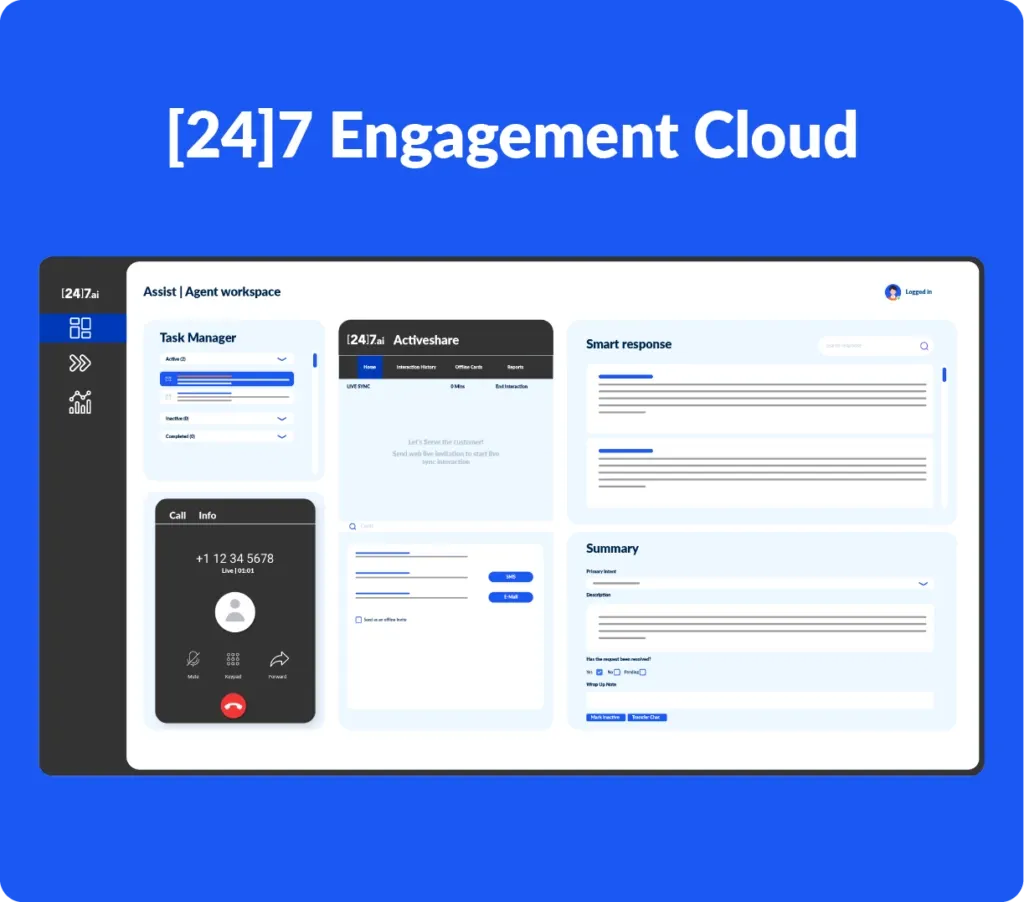- Why [24]7.ai
- Products

[24]7 Engagement Cloud, an AI-powered omnichannel CX platform, equips you to excel at every stage of the customer journey, from the very first interaction to building enduring relationships. A complete package that helps you acquire new customers, nurture existing ones, and drive long-term retention – all on a single, unified platform.
Discover how our platform empowers customers, agents and contact center leaders to deliver exceptional CX: - Services
Crafting Unforgettable Customer Experiences
Go beyond meeting expectations and cultivate customer loyalty. We are passionate CX specialists dedicated to crafting unforgettable experiences. Leverage a powerful blend of expertise, teamwork, and cutting-edge technology to transform your CX strategy. - Solutions
End-To-End CX Management
Explore by Use Case
US Retailer Transforms CX with [24]7.ai Managed Customer Engagement
Gold Awards at US Customer Experience Awards, 2024
- Company
Explore [24]7.ai
Explore Locations
- Insights
- Careers
Work @ [24]7.ai
Work Locations
- Product Login and Support
- Contact Us
Want to know more?
Subscribe to our free newsletter and blog updates in your inbox